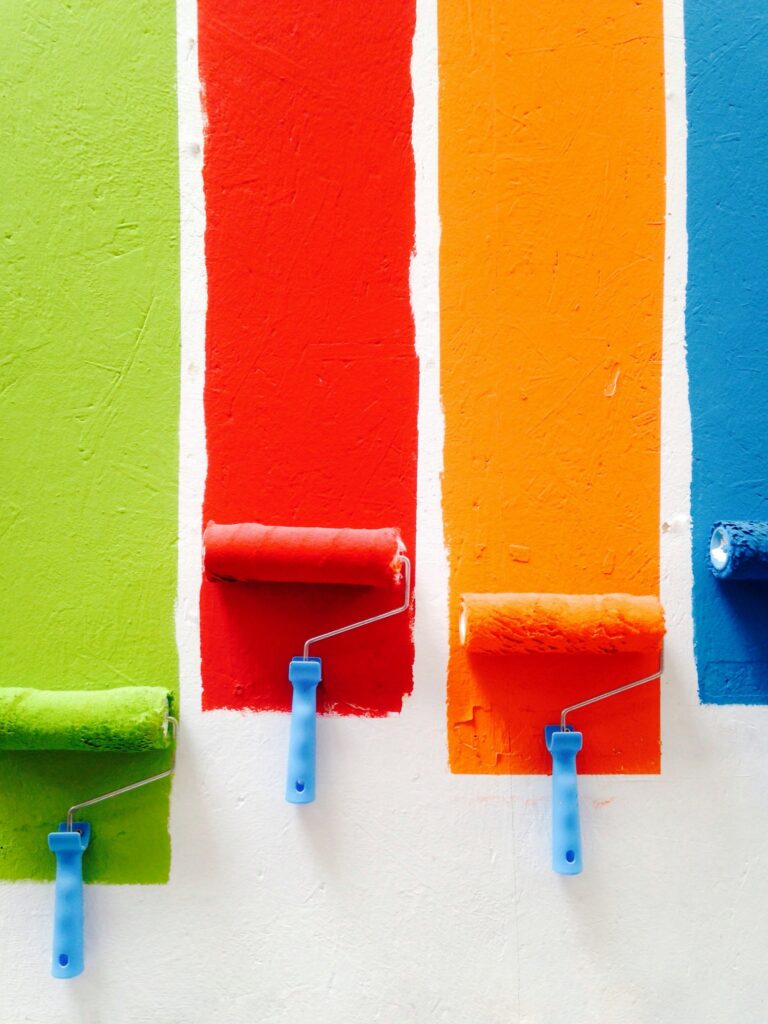Paint is an essential element in the world of art, construction, and decoration. Whether you are an artist, a homeowner, or a professional painter, understanding the composition of paint can enhance your appreciation of its properties and its applications. This comprehensive article delves into the core components of paint, exploring the materials that give it its unique characteristics and functionality.
The Basics of Paint Composition
Paint is essentially a liquid or semi-liquid substance that, when applied to a surface, forms a solid film after drying. The composition of paint includes four primary components: pigments, binders, solvents, and additives. Each of these components plays a crucial role in determining the paint’s color, consistency, drying time, and durability.
Pigments: The Source of Color
Pigments are finely ground particles that provide paint with its color and opacity. They are divided into two main categories: organic and inorganic pigments.
Organic Pigments
Organic pigments are derived from carbon-based molecules and are known for their vibrant colors and transparency. These pigments are commonly used in artistic paints and high-quality decorative paints. Examples include phthalocyanine blue, quinacridone red, and azo yellow. Organic pigments offer a broad spectrum of hues but can be less stable than inorganic pigments under exposure to light and chemicals.
Inorganic Pigments
Inorganic pigments, on the other hand, are typically mineral-based and offer excellent opacity and durability. Common inorganic pigments include titanium dioxide (white), iron oxide (red, yellow, and brown), and chromium oxide (green). These pigments are favored for their stability, making them ideal for exterior paints and applications requiring long-term exposure to the elements.
Binders: The Film-Forming Component
Binders, also known as resins, are the film-forming agents in paint. They bind the pigment particles together and adhere them to the painted surface. The type of binder used in paint significantly affects its performance, including its adhesion, flexibility, and resistance to environmental factors.
Natural Binders
Traditional binders include natural materials like linseed oil, which has been used in oil paints for centuries. Linseed oil dries slowly but forms a strong, flexible film that is highly durable. Other natural binders include casein (derived from milk proteins) and egg yolk (used in tempera paints).
Synthetic Binders
Modern paints often use synthetic binders such as acrylic, alkyd, and polyurethane resins. Acrylic binders, made from acrylic polymers, are water-based and offer excellent flexibility and weather resistance, making them popular in both artistic and commercial paints. Alkyd binders, derived from modified oil-based resins, provide a tough, durable finish and are commonly used in enamel paints. Polyurethane binders offer superior toughness and abrasion resistance, ideal for industrial and protective coatings.
Solvents: The Medium for Application
Solvents, also known as carriers or thinners, are liquids that dissolve the binder and provide the paint with a workable consistency. They facilitate the application of paint and evaporate as the paint dries, leaving behind a solid film.
Water-Based Solvents
Water-based solvents, used in acrylic and latex paints, are popular due to their low toxicity and ease of cleanup. These paints are environmentally friendly and have a faster drying time compared to oil-based paints. Water acts as the solvent, and once it evaporates, the binder hardens into a film.
Oil-Based Solvents
Oil-based solvents, such as mineral spirits and turpentine, are used in traditional oil paints and some alkyd paints. These solvents allow for a longer working time and smoother blending of colors but come with higher levels of volatile organic compounds (VOCs), which can be harmful to health and the environment.
Additives: Enhancing Paint Properties
Additives are specialized ingredients added to paint formulations to modify their properties and improve performance. These can include agents for controlling flow and leveling, enhancing drying time, preventing mildew, and increasing UV resistance.
Flow and Leveling Agents
Flow and leveling agents help paint spread evenly across the surface, minimizing brush marks and providing a smooth finish. These agents are particularly important in high-gloss paints and coatings.
Drying Agents
Drying agents, or driers, accelerate the drying process of oil-based paints by promoting the oxidation and polymerization of the binder. Common drying agents include cobalt and manganese compounds.
Mildew and Fungicide Additives
Mildew and fungicide additives protect the paint film from microbial growth, which can cause discoloration and deterioration. These additives are essential in paints used in high-humidity environments like bathrooms and kitchens.
UV Stabilizers
UV stabilizers are added to paints to enhance their resistance to ultraviolet light, preventing the degradation of both the binder and the pigments. These stabilizers are crucial for exterior paints exposed to direct sunlight.
